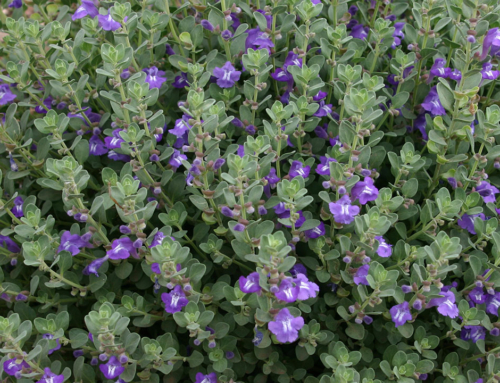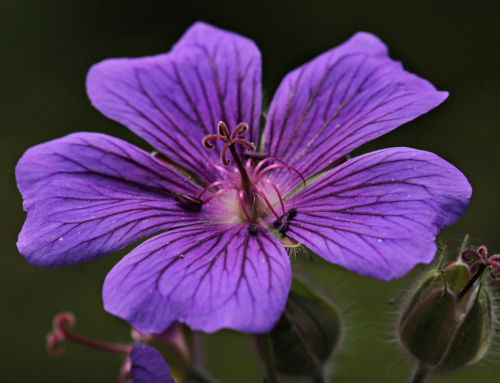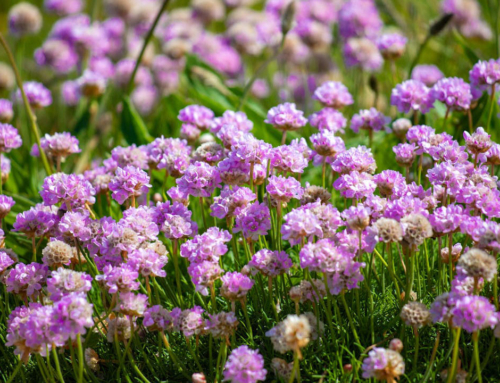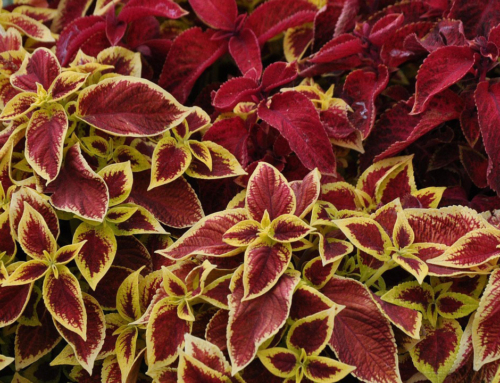By Theresa Rooney, Hennepin County Master Gardener
Planting garlic is so easy and the results are delicious. Garlic is planted in the fall, usually in October (2 weeks earlier in Northern Minnesota) and then harvested the following July. Garlic is a bulb. It is related to onions. There are 2 main types of garlic.
- Softneck– this is the white garlic you find in the grocery store. Usually there are 10-40 cloves in each head of garlic. These are not the varieties that are normally plant here. But you can plant it if desired.
- Hardneck– this is the garlic we can plant in Minnesota in the fall. It is the garlic that you find at the farmers’ markets in summer and fall. These heads of garlic usually have 4-12 cloves in them, and in the middle of each head is the hard stem or ‘neck’ of the garlic. This ‘neck’ was once the flowering stalk or the ‘scape’.
I will be writing about hard neck garlic, but soft neck is treated very much the same.
Preparing The Site and Planting
- Prepare the bed where you will be planting the cloves in September. Add organic matter and remove the weeds. Water well and mulch. Keep the bed weeded. Pull back the mulch just before planting.
- Purchase the garlic at local garden centers, on line, or from local farmers’ markets. You can also save garlic that you grow to plant the next season.
- Choose the biggest, healthiest and heaviest heads of garlic for the type(s) you have selected.
- Carefully break the head apart and separate each clove of garlic. If possible keep part of the basal plate (bottom rough root area) attached to each clove.
- Plant the biggest and healthiest cloves of garlic, pointy end up, basal plate side down.
- Plant each clove about 2” deep and about 6” or more apart. Cover, label and water well.
- Keep watered during the fall. It is normal for the garlic to sprout in the fall. Add the mulch to keep down the weeds. Garlic does not compete well with weeds. Garlic plants will get about 24-36” tall so consider this when planting. They look much like onions when growing to give you an idea of what the leaves look like.
- Once the ground is frozen you may want to apply winter mulch, but make sure to remove it in the spring to allow the soil to warm up and the garlic to continue growing.
Caring for the Growing Garlic Plant
- Remember to keep your garlic watered during the growing season. They have shallow root systems, so inadequate watering may create smaller or deformed bulbs and slow growth. It may also impact the flavor.
- In June the garlic will send up ‘scapes’ or flowering stalks. Cut these off when they start to curl and eat them! The top 6-12” are tender. They can be stir fried, steamed or sautéed. Do not let your garlic go to seed. You want all of the plant’s energy directed at creating the garlic heads.
- If it does produce small garlic bulbs (seeds) or ‘bulbils’ above ground you can plant these when mature. They will take 3-4 years to produce heads. (You can also use them as you would onions or garlic.)
- Stop watering when about half of the foliage starts to brown and tip over.
Harvesting and Storage
- Harvest the garlic when the soil is dry and about 2/3 of the foliage has died down.
- Brush most of the soil from the garlic and ‘cure’ the garlic for 3-4 weeks in a cool, dry dark location. (Hang it or set it on a screen where air can circulate all around the bulbs.) This toughens up the outer skin allowing for longer storage. Garlic may store up to 8 months or longer.
- Cut off the extra foliage and store the garlic at temperatures 32 to 45 degrees. Store in a cool, dark location in your home- not in the refrigerator.
- Softneck garlic can be braided, Hardneck does not braid well.
Hardneck garlic will vary in flavor, heat and intensity depending upon the variety and the growing conditions. Some are very mild and sweet other are very hot! Some of the varieties that you may want to try are: Blossom, Asian Tempest, Spanish Roja, Creole Red, Purple Glazer, Chesnok Red, Siberian, German White, Silver White. These are also listed in the order in which they mature. Elephant Garlic, while very large, is not a true garlic but a type of leek. It usually has a very mild flavor.
Here is a great link for more in-depth information on growing garlic.
Please consider growing this wonderfully delicious herb.




